You’re walking along some bushes in a park, and suddenly see a tiny gray creature skittering into the fallen leaves. At first you might think it’s a rodent, but this frenetic ball of energy is actually a shrew.
While it may appear small and gray, shrews are one of the most voracious mammalian predators on the planet. And they’re abundant and widespread, found on five continents in a variety of habitats. In the United Kingdom, there are an estimated 50 shrews per hectare in woodlands, with a country-wide population of more than 40 million shrews. The northern short-tailed shrew may be the most common mammal of the eastern United States.
Soricidae, the shrew family, contains more than 385 species. Superficially, many of these species look similar, with most having pointy snouts, a streamlined body and a grayish coloration. But they exhibit a diversity of behaviors. Even though they’re common and widespread, few people see them and fewer know their crazy habits and adaptations.
Let’s take a look at just some of the many reasons to marvel at shrews.
-
Life in the Fast Lane
If you’re lucky enough to see a shrew, you’ll notice that it’s moving rapidly, with rapid, jerky movements. This isn’t because you scared it; shrews just live life fast and furious. Your most highly caffeinated, Type A colleague will appear downright slothful compared to a shrew.
While this varies among species, a shrew’s heart rate beats 800 to 1000 times per minute. The Etruscan shrew, the smallest terrestrial mammal on earth, has a heart rate that can reach 1500 beats per minute, more than any other mammal and more even than the hummingbird.
Shrews have been recorded making 12 body movements per second. (Go ahead and try to duplicate this feat). They’re in constant motion, rarely stopping to sleep. They have a high metabolism, which means they have to eat. A lot.
A shrew’s life is a constant search for prey. Many species must eat their body weight’s worth of food each day. (I advise you not to attempt this one). If a shrew doesn’t eat within a few hours, it dies. This constant need for food has led to some truly bizarre and even disturbing adaptations.
-
Watch Those Whiskers
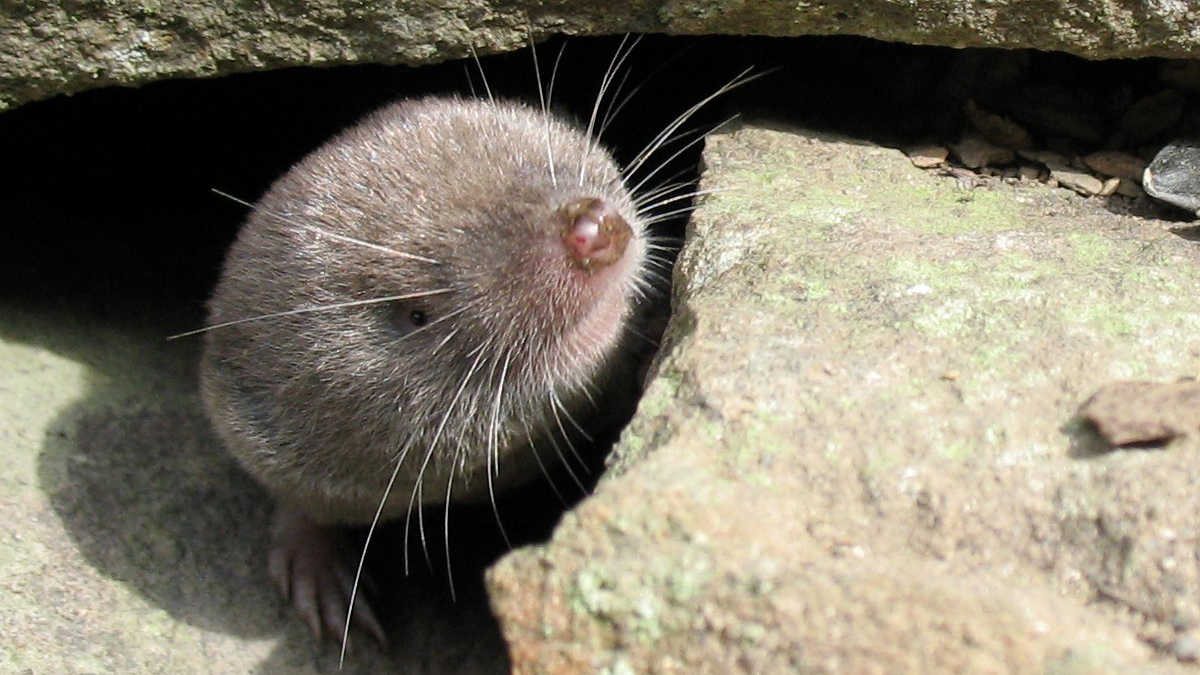
Northern Short-tailed Shrew. Photo © Gilles Gonthier / Flickr Shrews must find and subdue prey fast. They have poor eyesight and often live in thick cover filled with obstacles. How do they manage?
Many sources mention that some shrews use echolocation: they emit sounds producing sonar that helps them navigate their world (much like bats). Shrews emit a sound described as a “twitter” and it is often assumed this is used in echo-location. However, much of the evidence appears anecdotal. An article in the journal Biology Letters found “shrew-like calls can indeed yield echo scenes useful for habitat assessment at close range.”
There isn’t evidence that this echolocation is used to find prey. Instead, shrews rely on their long, highly sensitive whiskers, also known as vibrissae. According to a study published in Philosophical Transactions B, the Etruscan shrew hunts in an environment where crickets are particularly abundant. It moves its whiskers constantly – a motion called, appropriately enough, whisking – until it brushes its prey. Then it strikes quickly and with great precision.
Of course, wasting time attacking non-prey items that the whiskers brush against would burn precious energy. The researchers conducted an intriguing test:
“Experiments with dummy prey objects showed that shrews attacked a plastic replica of a cricket but not other plastic objects of similar size. Altering the shape of crickets by gluing on additional body parts from donor animals revealed that the jumping legs but not the head are key features in prey recognition.”
-
Shrew Venom, A Horror Story
You can spend way too much time on YouTube watching videos of shrews attacking mice, scorpions, snakes and other larger creatures. Spoiler alert: the shrew wins.
This is because many shrew species are venomous. Research has found that an individual shrew stores enough venom to kill 200 mice. Some shrews also use this venom for something called live hoarding.
Live hoarding sounds innocuous enough, but in reality it shares numerous plot points with that terrifying movie Hostel. Here’s how it works.
The shrew lacks hollow fangs (as in venomous snakes) but instead has a gland that allows saliva to flow with the venom. When the shrew encounters its prey – often an invertebrate, but it can also be a mouse or other vertebrate – it begins biting it, allowing the venomous saliva to flow into the wound.
For the prey, this is the beginning of a very bad day. The venom paralyzes the creature, but keeps it very much alive. The shrew can then move it to a cache, available for whenever hunting is not going so great. For an animal that has to eat constantly, this keeps a fresh if unsavory meal always at the ready.
The American Chemical Society reports that a mealworm can be kept, paralyzed but alive, for 15 days.
Shrew bites on humans are reportedly painful but fade in a few days. Be very, very glad these animals are not larger.
-
Following the Herd
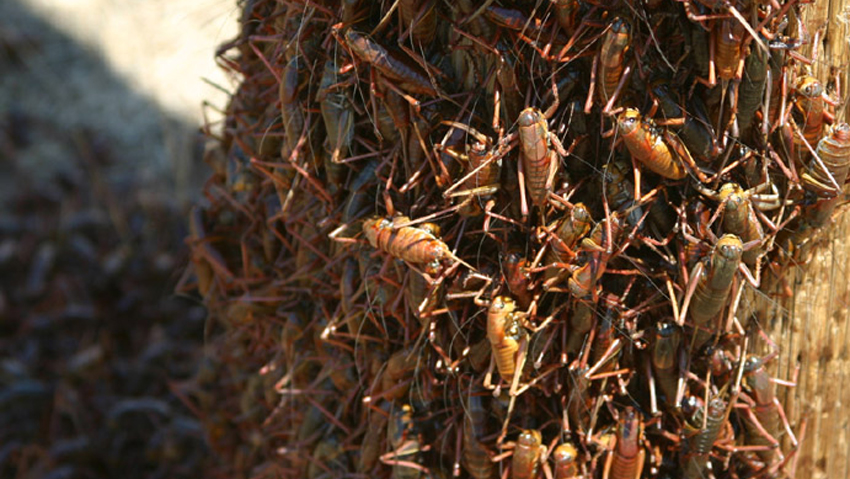
Mormon crickets in Nevada, 2006. Photo © katie madonia / Wikimedia Commons through a CC BY 2.5 license In the sagebrush country of the western United States, one species of shrews may follow the thundering herds … of Mormon crickets. Mormon crickets (actually a species of katydid) are prone to periodically have population explosions resulting in large swarms.
Vladimir Dinets, in the Peterson Field Guide to Finding Mammals, includes this intriguing description: “On arid plains these shrews follow swarms of Mormon crickets the same way Gray Wolves follow migrating Caribou herds. If you encounter a swarm, look for shrews scurrying along its tail edge.”
Dinets’ book, by the way, is like a shrew spotter’s bible, including tips on where and how to seek all the North American species.
-
Walking on Water
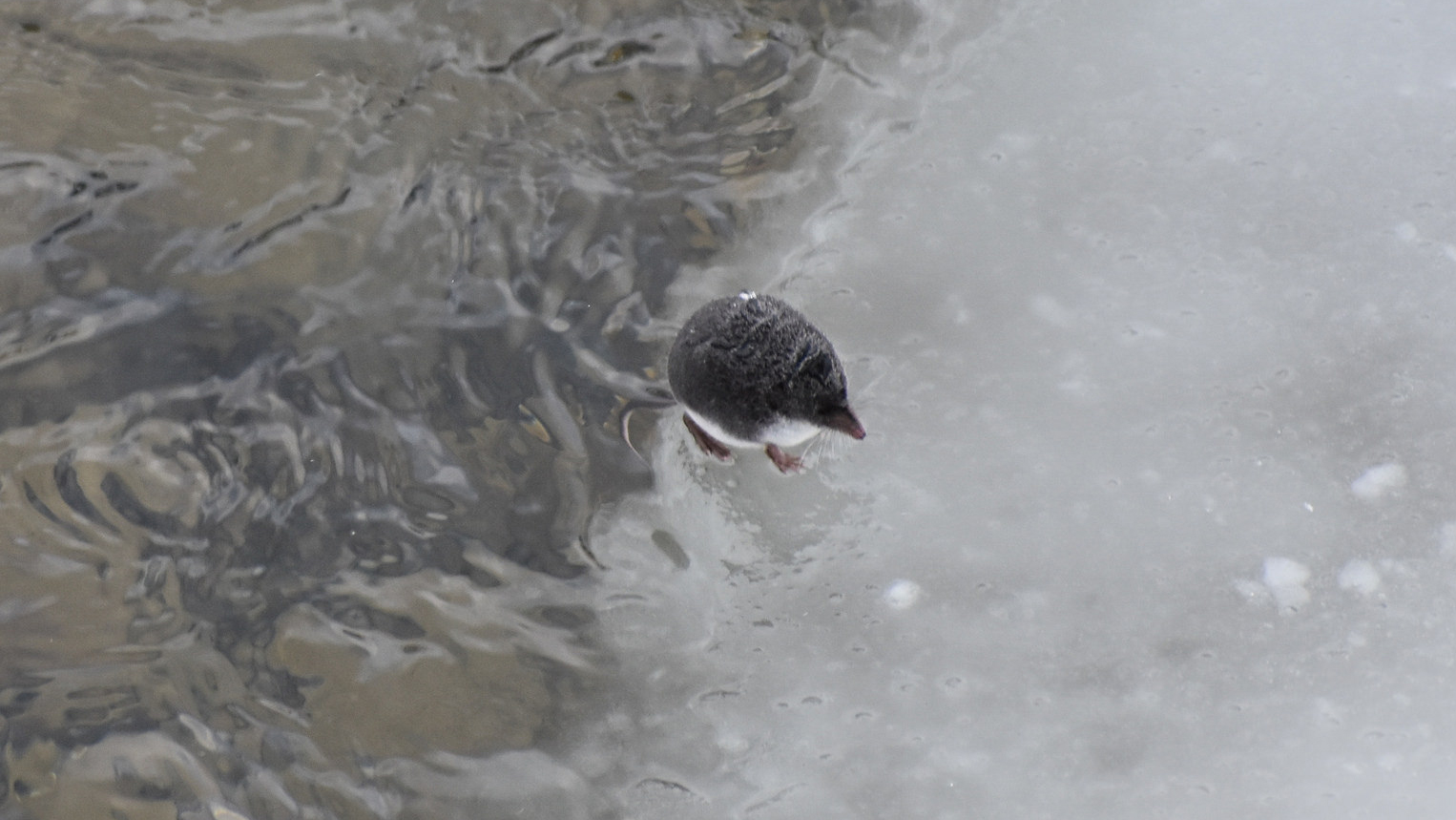
Water shrew on Pebble Creek. © NPS/April Henderson / Flickr You can find a shrew species in just about any habitat. Several species of water shrews even take to streams. The water shrew has stiff hairs on its feet that allow it to scamper across the surface of the water. Its stiff fur also traps air bubbles, allowing it to stay underwater for short bursts. It must stay in constant motion underwater, or it pops back up to the surface. It hunts caddis larvae and other small aquatic prey.
Theodore Roosevelt (yes, the president) observed a water shrew catching a minnow in North Idaho. He described it in his book The Wilderness Hunter: “It was less in size than a mouse, and as it paddled rapidly underneath the water its body seemed flattened like a disk, and was spangled by tiny bubbles, like flecks of silver.”
As a side note, Theodore Roosevelt also kept a shrew in captivity (he fed it a mouse and garter snake) and observed, wrote about and collected shrew species on his lengthy African safari. He even has a shrew species named after him. I’m not surprised that he had a love of shrews, given his accomplishments as a conservationist, naturalist and outdoors enthusiast. I wish for another politician like him nearly every day.
-
The Incredible Shrinking Brain
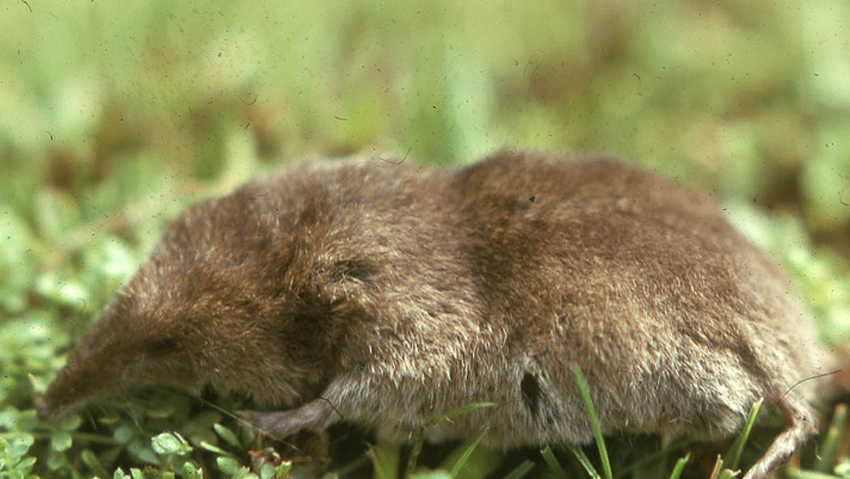
Common shrew (Sorex araneus). Photo © Dr Mary Gillham Archive Project / Flickr through a CC BY 2.0 license Many wildlife species feast and bulk up for the cold winter months. With the shrew’s metabolism, weight gain is not an option. And so at least one shrew species shrinks. A recent study, published in the journal Nature, found that in common shrews in Germany, “Their spines also got shorter, and major organs, including the heart, lungs and spleen, shrank. Even their brain mass dropped by 20–30%.”
Researcher Javier Lazaro hypothesized that “reducing their body mass during winter might increase their chances of survival, because they wouldn’t need so much food.” The brain in particular has high energy requirements, but the study could not determine if shrews experienced decreased cognitive functions.
-
Foxes Hate Them, Trout Love Them
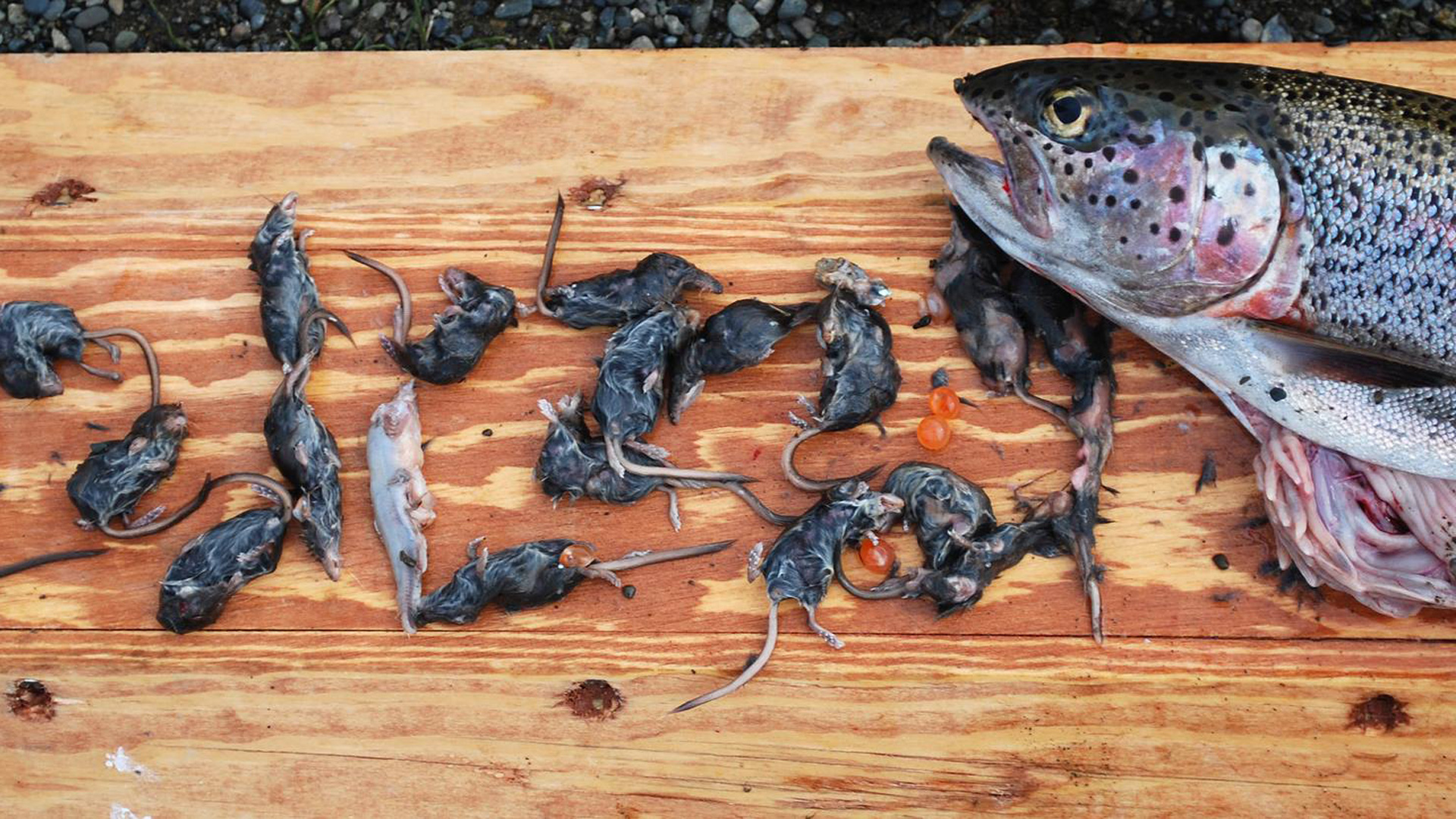
The shrew-eating trout of Togiak National Wildlife Refuge. Photo: U.S. Fish and Wildlife Service. Shrews may be fierce predators, but they’re small, which means they in turn become prey. Many mammalian predators, including red foxes, raccoons and cats, will attack them but rarely actually eat them. That’s because shrews emit an unpleasant musk that some liken to the smell of skunk.
This does not deter other predators, like owls and snakes. But my favorite incidence of shrew predation is a rainbow trout caught at Alaska’s Togiak National Wildlife Refuge that had 19 shrews in its stomach. These were not water shrews, but other species that fell into the water and became prey. You can read the full account in my previous blog.
-
Shakespeare and Shrews

Petruchio (Kevin Black) and Katherina (Emily Jordan) from the 2003 Carmel Shakespeare Festival production at the Forest Theater. Photo © Smatprt / Wikimedia Commons through a CC BY-SA 3.0 license And then there’s the literary work, Shakespeare’s Taming of the Shrew. During my Shakespearean literature class in college, my professor stated that the Bard did not refer to the literal shrew, as such a benign, inconsequential mammal wouldn’t fit the theme of the play.
As a lifelong mammal nerd, this amounted to heresy. I decided to make my final paper for the class a detailed comparison of the real shrew with the literary one. This, in retrospect, was a bit of a gamble. I relied on a store of shrew facts, many of which now appear in this blog.
As I read my professor’s comments on the paper, I could sense that she was initially annoyed at my topic, then became increasingly alarmed as she realized I was quite serious. The paper received an “A”, along with the pointed suggestion that I pursue a career in nature writing as opposed to academia.
And here I am, still sharing shrew facts.




Amazing. Thank you for writing illuminating material
Yes but could it be a snake or a mice that has took some peanuts that are not in the shell and put all of them in the living room in a perfect circle
Loved your shrew(d) observations, but disagree with wanting more politicians like Theodore Roosevelt. He was a merciless hunter of big game across the globe, and a war monger. As with so many public figures that we idolize without closer examination, he had some serious flaws as a humanitarian.
What are shrew young called?
I found one reference that claims shrew young are called “shrewlets,” which I can’t help but love, but I have never actually heard them called this. I suspect in this case, the young are simply called baby shrews.
I enjoyed reading your article? I have been a fan of the often misidentified shrew. Years ago(precisely 38) I had spotted what I thought was a velvety brownish grey mouse. It was late at night, and I was taking advantage of the quiet alone time that late night would afford me the time to focus on my creative sewing projects. At the time, I was raising 2 little boys, ages 3 and 1 year. Late night was my escape into my own world of creative productivity.
So on to the discovery of the shrew. I was at first startled by this bold little creature, coming out of hiding and leaning back on his hind legs, gave me a look of “oh, crap, you’re awake”. He didn’t seem very concerned about me, but rather scurried on to the kitchen, where I naturally assumed he was on the hunt for his next meal of tasty boxed cereal and then on to use my silverware drawer as his own personal restroom to relieve himself.
I remember thinking that the following day would have to be my hunting day(this mouse would be pardoned for this night at least)
I was not looking forward to sanitizing my dishwater, silverware, utensils ect.. Not to mention looking for any “chew holes”at the bottom of the boxes, bags or other containers in my pantry that housed the food that I prepared for my children. Wiping everything down with disinfectant was a daunting, time consuming task that I was not looking forward to. I hoped that my mouse hunting skills would be swift, but I knew deep in my heart that when you see “a” mouse, there are at least 10 more that you don’t see, keeping watch. Ugh! I really had better things to do with my time. On to the local hardware store to invest in some sort of contraption to catch these little critters that had so boldly taken up residence in my home. As much as I wanted them gone, I had no desire to kill them. My mother had read “Kinship with all life” to me as a child, and I have to admit, I did ask this mouse to leave the premises at once, or else! I figured he was going to stand his ground, so I would have to do the same. The guy at the hardware store said that it sounded more like a shrew and not a mouse. He then went on to tell me that I should be happy to share my home with this little critter, as they eat bugs and are not interested in any of the food in my pantry, except for maybe the cat and dog food. And as far as pooping on my silverware, had I actually identified any droppings? Not even one little poop, come to think of it, I hadn’t seen any sign at all that there were any mice in my home. Needless to say, I was eager to learn about this little critter that was feasting nightly on bugs and spiders, keeping my little boys safe from the possible poisonous bites of some of the common spiders found in the Midwest, which is where I live. I named our houseguest “Twinkles”. To this day my 2 boys remember our shrew as more of a pet than a pest. My husband told me yesterday that we have a mouse, a very strange looking one. I laughed and told him to leave it alone and be grateful for him living in our old farmhouse, that chances are he(the shrew) would most likely keep our home mouse free for the winter. I wonder what his name is….the shrew, that is?
In the past week I caught 3 shrews in the mouse traps set in my garage. Never thought they were around! I had peanut butter on the traps and they probably were attracted to that. They were shrews because the nose was long and pointed, the tail was short, teeth were visible on the underside of the head and shorter legs. They were the same grey color as the mice living around here. Wisconsin.
Would a shrew bite make a cat sick?
It is hard to tell. The shrew’s bite is venomous. If the cat seems sick, you should see a veterinarian.
Have just discovered a pile of 7 dead shrews by a burrow , very strange. All in a neat little pile – any ideas?
I love to watch shrews. I have one that follows the same path every day at dusk. I put peanuts out for a couple of chipmunks every evening so that when they start foraging in the morning, they will find something. Yesterday, I saw my shrew friend take a peanut into the dense plant growth along my walkway. I had no idea that they ate anything other than small mammals and insects. I will make sure that I put some seed and peanuts out for him also. Thanks for the info.
I have a family of shrews in my kitchen and my three cats barely react to them. I think they live off the cat food. I had a baby one that wandered across the floor looking for water and I handled it before it ran off.
I spotted three young shrews in my garden all busy running around about 5 hours later I went out in the garden saw a bit of movement under a few leaves. On closer inspection I found one eating another shrew and then spotted two more together dead, close together. Is this normal behaviour .
If they bit a small dog that weighs only 3to 5pounds or a cat can it kill them? How would you get rid of them if you have them in your house?
They do not possess enough venom to kill a small dog or cat. Cats regularly kill shrews but don’t eat them, for reasons described in the story. I would contact a pest control company if you have problems with them in your home.
I caught a northern short tailed shrew in my kitchen in Indianapolis today, and have enjoyed learning more about them. Might the presence of the shrew explain the absence of the annual ant invasion this year? We’ve had the house for 12 years and every spring until this one we have been invaded by ants from late February through about June. At any rate, I caught it in a live trap and released it in a nearby park. Hopefully I can find the hole it used to get in the house and seal it up.
We caught a shrew in a mouse trap under the kitchen sink. Reading your article makes me wiser! Last week I blamed my little chihuahua for chasing a skunk. Now I wonder if he had been chasing this shrew in our house or around it.
Thank you, that was both informative and entertaining. I now recognize I’ve misidentified what was a shew for a mouse.